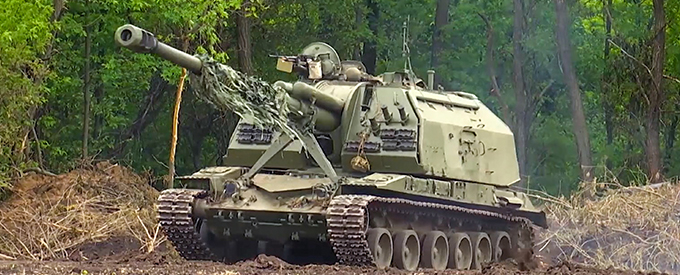2022-10-02
Russia Unveils Latest Self-Propelled Howitzer at ADEX
JSC Rosoboronexport, a subsidiary of Russian state corporation Rostec, launched the Msta-S 155mm STANAG-compatible self-propelled howitzer (SPH) at the ADEX 2022 defence show held in Baku, Azerbaijan, from September 6 to 8.
The presentation of the Msta-S 155mm SPH attracted the attention of foreign countries operating STANAG-compatible artillery systems and those planning to acquire them. The export-oriented variant of the SPH is based on the Msta-S 152 mm SPH, the combat use of which has been shown by the Russian Ministry of Defense (MoD) several times against various armoured vehicles, manpower, and fortifications during area denial operations. The export-oriented 2S19M1-155 155mm SPH features a new automated guidance unit and a STANAG-compatible 155mm gun.
The Russian artillery systems have passed through several rounds of modernisation, resulting in increased combat effectiveness. In particular, the 2S19M2 variant of the Msta-S has received the 2A64M howitzer with an improved range of fire and an upgraded fire-control system. The modernised artillery system also features a better firing rate (10 rds/min compared to 7-8 rds/min of the basic 2S19 SPH). Moreover, the multiple rounds simultaneous impact (MRSI) capability is one of the main technical features of the 2S19M2.
The Russian MoD has also demonstrated the effectiveness of guided artillery projectiles (GAPs). The crews of the Russian Msta-S SPH have repeatedly used the Krasnopol 152mm GAPs to engage armoured vehicles and fortified positions during special operations. For instance, using GAPs with 152mm/155mm artillery systems allows an operator to reduce ammunition consumption and target engagement time by 40-50 times and three to five times, respectively.
Such guidance ensures the effective use of GAPs against different targets (including combat vehicles, command posts, constructions, etc.). Additionally, the Krasnopol-M1 GAP with a mid-flight inertial guidance unit and laser guidance in the terminal phase of flight features a firing range of 22-25 km and a hit probability of 80-90 per cent.
The 2S19M2 Msta-S SPH has a range of fire of 30 km. The artillery system fires in both direct and direct modes and reportedly requires no prepared positions. The crew uses high-explosive, high-explosive fragmentation, and guided rounds to inflict maximum damage on fortified positions, hardened sites, armoured vehicles, and manpower of the opposing side.
Furthermore, the Nakidka (Mantle) cover dramatically reduces both the radar and thermal signatures of the 2S19M2 Msta-S, protecting high-precision weapons.


No Comments